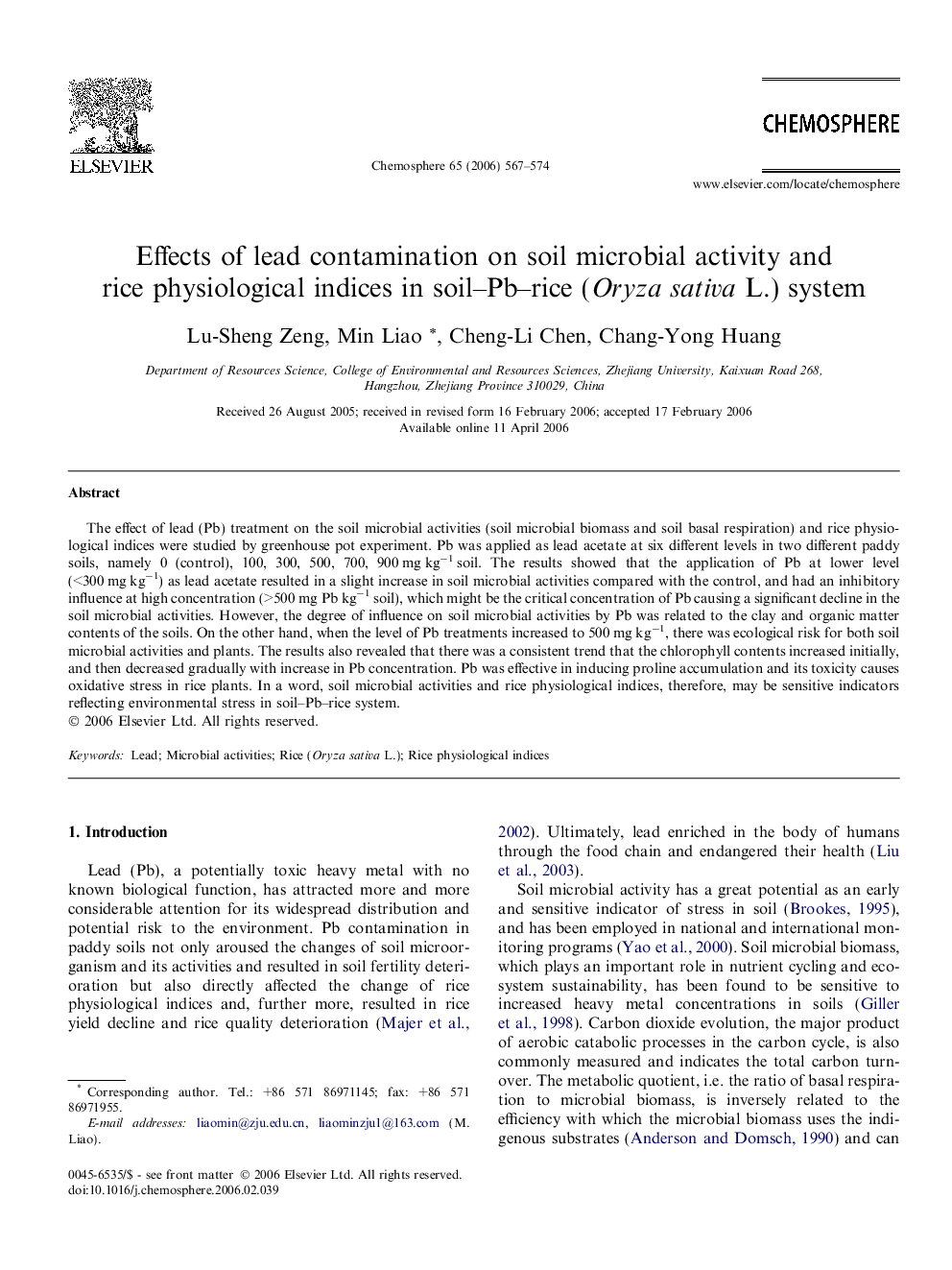| Article ID | Journal | Published Year | Pages | File Type |
|---|---|---|---|---|
| 4416686 | Chemosphere | 2006 | 8 Pages |
The effect of lead (Pb) treatment on the soil microbial activities (soil microbial biomass and soil basal respiration) and rice physiological indices were studied by greenhouse pot experiment. Pb was applied as lead acetate at six different levels in two different paddy soils, namely 0 (control), 100, 300, 500, 700, 900 mg kg−1 soil. The results showed that the application of Pb at lower level (<300 mg kg−1) as lead acetate resulted in a slight increase in soil microbial activities compared with the control, and had an inhibitory influence at high concentration (>500 mg Pb kg−1 soil), which might be the critical concentration of Pb causing a significant decline in the soil microbial activities. However, the degree of influence on soil microbial activities by Pb was related to the clay and organic matter contents of the soils. On the other hand, when the level of Pb treatments increased to 500 mg kg−1, there was ecological risk for both soil microbial activities and plants. The results also revealed that there was a consistent trend that the chlorophyll contents increased initially, and then decreased gradually with increase in Pb concentration. Pb was effective in inducing proline accumulation and its toxicity causes oxidative stress in rice plants. In a word, soil microbial activities and rice physiological indices, therefore, may be sensitive indicators reflecting environmental stress in soil–Pb–rice system.
